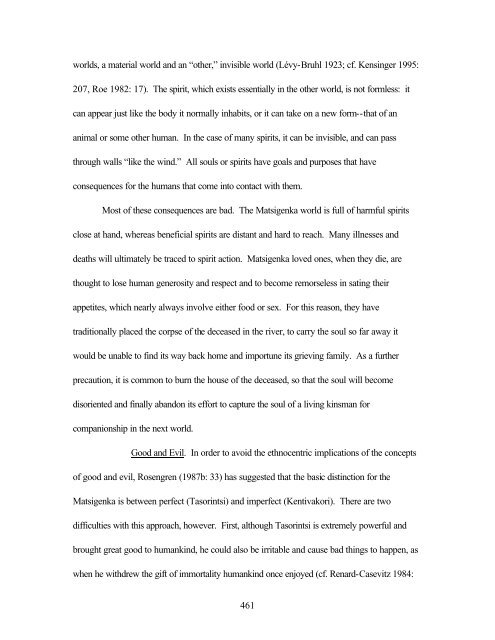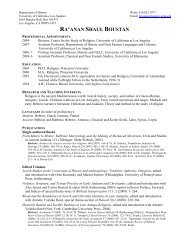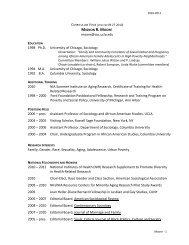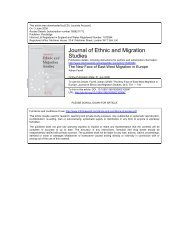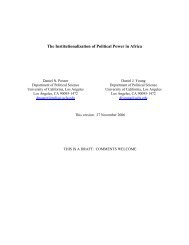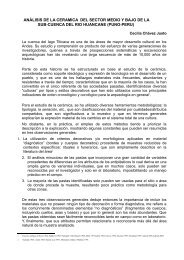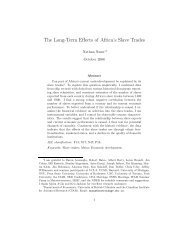433 Chapter Seven Cosmos For the Matsigenka of Shimaa, kameti ...
433 Chapter Seven Cosmos For the Matsigenka of Shimaa, kameti ...
433 Chapter Seven Cosmos For the Matsigenka of Shimaa, kameti ...
You also want an ePaper? Increase the reach of your titles
YUMPU automatically turns print PDFs into web optimized ePapers that Google loves.
worlds, a material world and an “o<strong>the</strong>r,” invisible world (Lévy-Bruhl 1923; cf. Kensinger 1995:<br />
207, Roe 1982: 17). The spirit, which exists essentially in <strong>the</strong> o<strong>the</strong>r world, is not formless: it<br />
can appear just like <strong>the</strong> body it normally inhabits, or it can take on a new form--that <strong>of</strong> an<br />
animal or some o<strong>the</strong>r human. In <strong>the</strong> case <strong>of</strong> many spirits, it can be invisible, and can pass<br />
through walls “like <strong>the</strong> wind.” All souls or spirits have goals and purposes that have<br />
consequences for <strong>the</strong> humans that come into contact with <strong>the</strong>m.<br />
Most <strong>of</strong> <strong>the</strong>se consequences are bad. The <strong>Matsigenka</strong> world is full <strong>of</strong> harmful spirits<br />
close at hand, whereas beneficial spirits are distant and hard to reach. Many illnesses and<br />
deaths will ultimately be traced to spirit action. <strong>Matsigenka</strong> loved ones, when <strong>the</strong>y die, are<br />
thought to lose human generosity and respect and to become remorseless in sating <strong>the</strong>ir<br />
appetites, which nearly always involve ei<strong>the</strong>r food or sex. <strong>For</strong> this reason, <strong>the</strong>y have<br />
traditionally placed <strong>the</strong> corpse <strong>of</strong> <strong>the</strong> deceased in <strong>the</strong> river, to carry <strong>the</strong> soul so far away it<br />
would be unable to find its way back home and importune its grieving family. As a fur<strong>the</strong>r<br />
precaution, it is common to burn <strong>the</strong> house <strong>of</strong> <strong>the</strong> deceased, so that <strong>the</strong> soul will become<br />
disoriented and finally abandon its effort to capture <strong>the</strong> soul <strong>of</strong> a living kinsman for<br />
companionship in <strong>the</strong> next world.<br />
Good and Evil. In order to avoid <strong>the</strong> ethnocentric implications <strong>of</strong> <strong>the</strong> concepts<br />
<strong>of</strong> good and evil, Rosengren (1987b: 33) has suggested that <strong>the</strong> basic distinction for <strong>the</strong><br />
<strong>Matsigenka</strong> is between perfect (Tasorintsi) and imperfect (Kentivakori). There are two<br />
difficulties with this approach, however. First, although Tasorintsi is extremely powerful and<br />
brought great good to humankind, he could also be irritable and cause bad things to happen, as<br />
when he withdrew <strong>the</strong> gift <strong>of</strong> immortality humankind once enjoyed (cf. Renard-Casevitz 1984:<br />
461


